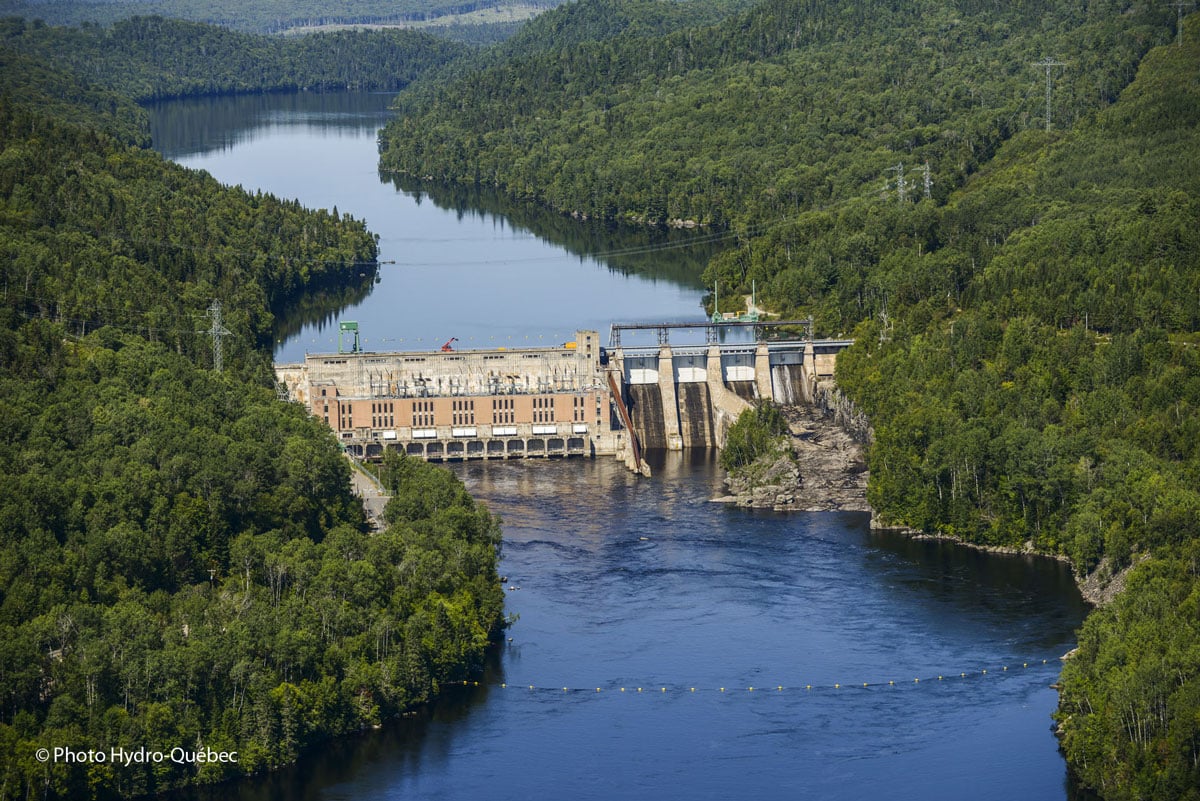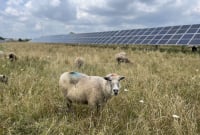Support strong Canadian climate journalism for 2025
Canada generated over two-thirds of its electricity from renewable energy sources last year, placing it second among "clean power matrixes" in the G20 industrialized economies, according to latest data from energy market research house BloombergNEF (BNEF).
But the country’s heavy reliance on a hydroelectric network that is seeing reservoir levels fall due to climate change combined with sluggish roll-out of wind and solar farms are set to impact Canada's energy transition goals.
"While we don't [yet] have specific projections for hydropower reductions as a result of falling water levels, it's clear that they create more pressure to deploy other renewables and storage faster. That's especially true when you consider growing exports to the U.S.," Derrick Flakoll, a BNEF policy analyst, told Canada's National Observer.
Total power generated in Canada declined almost four per cent year-on-year to just over 615 million megawatt-hours (MWh) in 2023 - the lowest level since data collection changes at Statistics Canada in 2016. Hydro-dams account for almost 60 per cent of the country's total electricity output.
Canadian hydroelectricity generation dropped 8.4 per cent to 359.3 million MWh and was the largest contributor to the national drop-off, due to its "susceptibility to persistent dry conditions," said StatsCan. Canada’s three largest hydro provinces, Quebec, British Columbia and Manitoba, were hit by drought that lowered power last year.
Wind and solar power ended 2023 with 17,700 megawatts and 3,830 megawatts installed, respectively, in Canada, according to BNEF figures. However, Flakoll stated that reaching national forecasts of having 24,700 megawatts of wind, a 39.5 per cent increase, and 10,700 megawatts of solar, a 179.4 per cent leap, flowing to the grid by 2030 will be key as hydropower becomes "less reliable."
New wind and solar “most cost-competitive”
"Diversifying the power mix will increase the system reliability [of Canada's electricity network], which can help during periods of droughts in hydro markets," he said.
Flakoll noted that BNEF analysis of both wind and solar’s levelized cost of energy - an equation based on the production revenue generated over the lifetime of a power project divided by its capital cost - showed that these mature renewables are the “most cost-competitive” sources for new power generation in Canada.
"Solar's increasing adoption globally will keep pushing its prices down. In tariff-free markets [including Canada], solar module prices have already reached US$0.10 per watt. We were seeing twice that price just one year ago, in June 2023."
BNEF in its so-called Economic Transition Scenario forecast, which models power deployment on a "least-cost basis," predicts Canada will by mid-century have 56,380 megawatts of installed wind (up 218.5 per cent from today), 69,500 megawatts of solar (up 1,714.6 per cent), 20,090 megawatts of battery storage (up 5,543.3 per cent), and 86,120 megawatts of hydropower capacity – similar to today – by mid-century.
Canada came behind Brazil with the cleanest power matrix among the G20 nations in 2023, with 67 per cent compared to 88 per cent of all power generated by renewables, according to BNEF. Most G-20 economies have percentages of between 20-50 per cent. No European Union member state has yet surpassed 60 per cent.
Global transition passes 'milestones'
The global energy transition reached new milestones in 2023, BNEF said in its latest Power Transition Trends report, with zero-carbon sources making up over 40 per cent of the electricity generated worldwide - hydropower accounted for 14.7 per cent, wind and solar together 13.9 per cent – a record high - and nuclear 9.4 per cent.
In 2024, the BNEF report noted, wind and solar have been “performing differently,” with capital expenditure in the former sector tumbling 11 per cent year-on-year to $90.7 billion, while solar investment reached a record $221 billion.
"Wind projects are still moving forward, but the industry has struggled to achieve the same step-change in deployment as solar," said Sofia Maia, lead author of Power Transition Trends 2024.
BNEF said the "momentum towards clean power has also accelerated," as wind and solar represented nearly 91 per cent of net capacity additions in 2023 – up from 83 per cent the year before. Fossil fuels, including coal and gas, made up just six per cent – the lowest level ever.
Expectations are for the worldwide trend to continue, with renewable energy projects locking up $313 billion in new investment in the first half of 2024, on par with the same period last year.
Ten international economies combined to generate nearly three-quarters of total renewable energy in 2023, led by China, which alone was responsible for one-third of output last year. The U.S., Brazil, Canada and India rounded out the top five, which accounted for 60 per cent of the world’s clean power production last year.
“We have seen a step-change in renewable energy compared to a few years before. There’s now no question this is the largest source of new power generation, wherever you go,” said Maia.






Comments